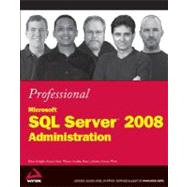
What is included with this book?
Brian Knight, SQL Server MVP, MCDBA is a database manager at Fidelity National Financial and a co-founder of SQLServerCentral.com. He has worked with SQL Server for 10 years and has written several SQL Server books, including Wrox' Professional SQL Server 2005 Integration Services.
Ketan Patel is a Development Manager for the Business Intelligence Center of Excellence group at Microsoft. He has worked with SQL Server and other Microsoft technologies for more than 10 years, and has presented at TechEd.
Ross LoForte is a SQL technology architect at the Microsoft Technology Center Chicago who specializes in Microsoft SQL Server solutions. He has more than 16 years experience developing, managing, and architecting SQL solutions on large, mission-critical database platforms. Ross presents at TechEd, SQL PASS, Gartner, TDWI, and other conferences.
| Forward | |
| SQL Server 2005 Architecture | |
| SQL Server 2005 Installation Best Practices | |
| Upgrading SQL Server 2008 Best Practices | |
| Managing and Troubleshooting the Database Engine | |
| Automating SQL Server | |
| Integration Services Administration and Performance Tuning | |
| Analysis Services Administration and Performance Tuning | |
| Administering the Development Features | |
| Securing the Database Engine | |
| Change Management | |
| Configuring the Server for Optimal Performance | |
| Optimizing SQL Server 2005 | |
| Monitoring Your SQL Server | |
| Performance Tuning T-SQL | |
| Indexing Your Database | |
| Replication | |
| Database Mirroring | |
| Backup and Recovery | |
| SQL Server 2005 Log Shipping | |
| Clustering SQL Server 2005 | |
| Table of Contents provided by Publisher. All Rights Reserved. |
The New copy of this book will include any supplemental materials advertised. Please check the title of the book to determine if it should include any access cards, study guides, lab manuals, CDs, etc.
The Used, Rental and eBook copies of this book are not guaranteed to include any supplemental materials. Typically, only the book itself is included. This is true even if the title states it includes any access cards, study guides, lab manuals, CDs, etc.